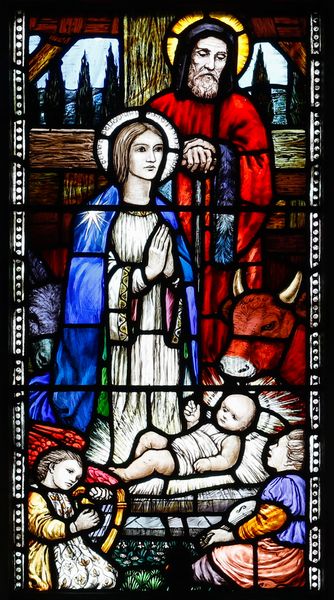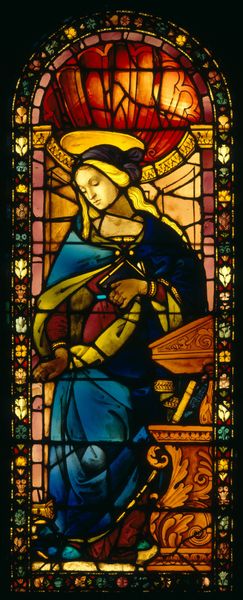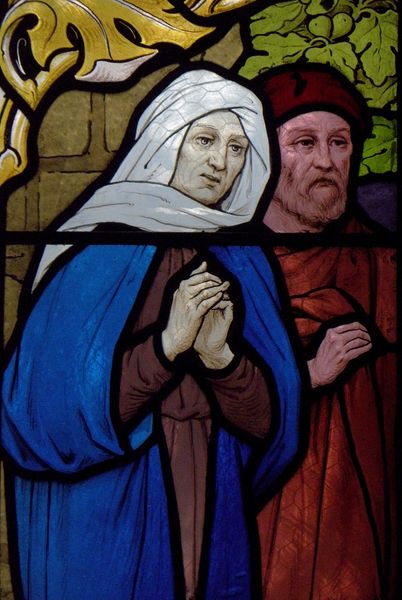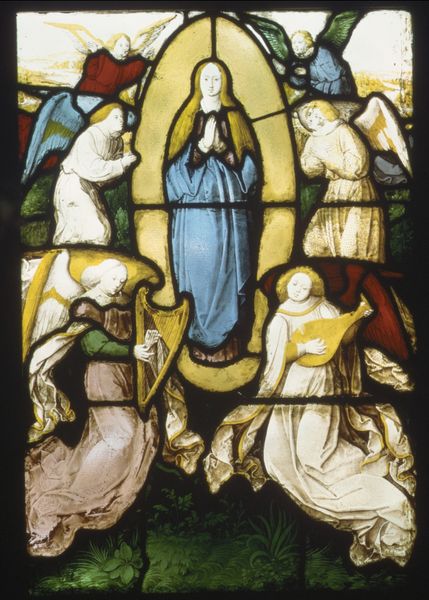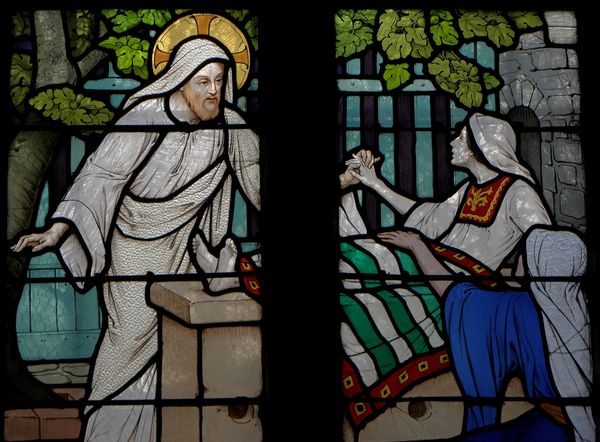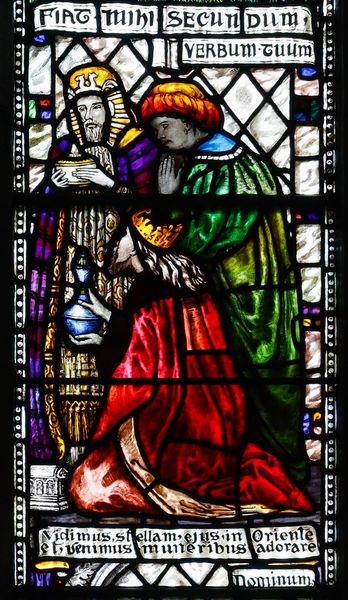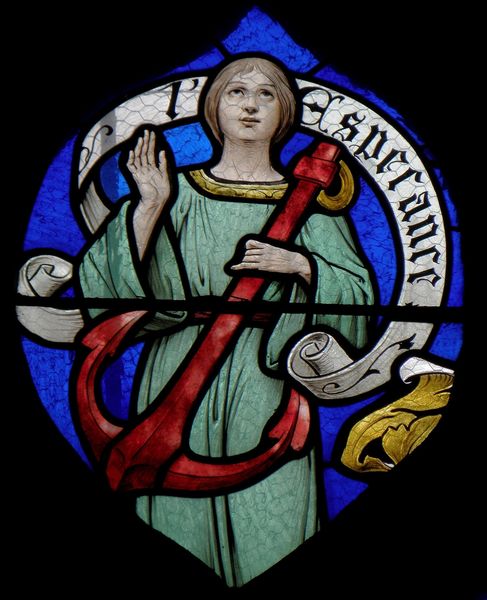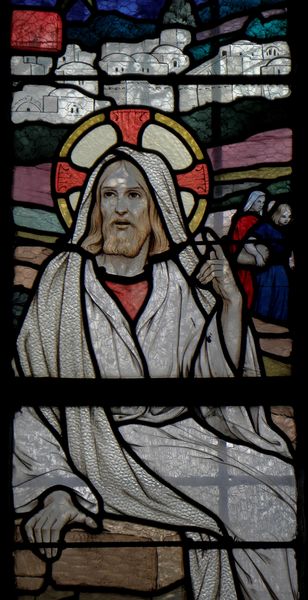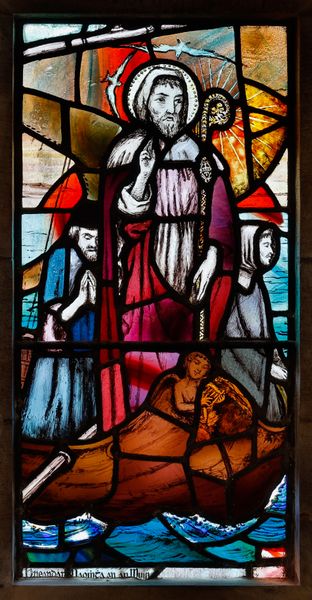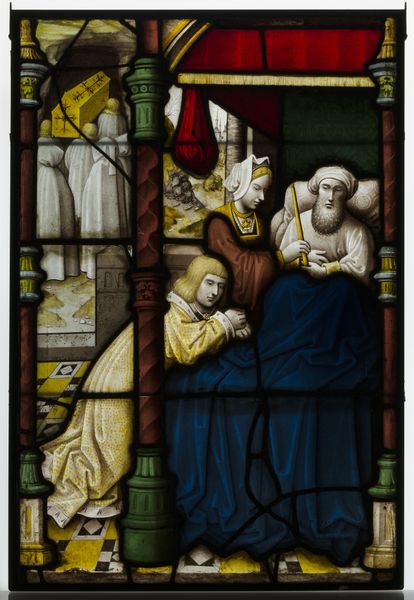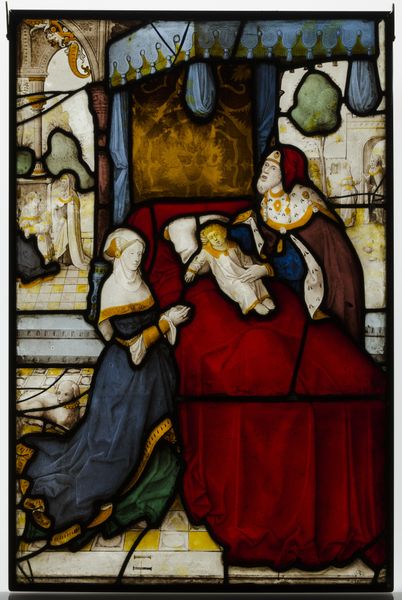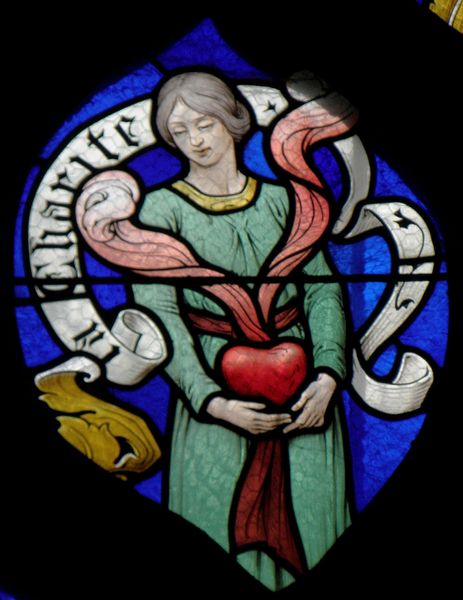
glass
#
portrait
#
medieval
#
sculpture
#
figuration
#
glass
Copyright: Public domain
Editor: Here we have Sarah Purser's stained glass piece, "Loughrea St. Brendan's Cathedral," from 1908. The blues are striking, but what really stands out is the meticulous composition. What are your observations of its form and structure? Curator: It is primarily a representational piece, employing classical figuration rendered in a medievalist style. Purser has divided the pictorial space horizontally, creating a hierarchy of elements. How do you see the usage of colour affecting the composition? Editor: I notice the dominance of blues in Mary’s robe which pulls the eye down the composition, counterbalanced by the brighter floral and script elements? Curator: Precisely. Consider the halo above Mary. What is its geometric function? Is it merely representational? Editor: Good question! The geometry reinforces the divine aspect through formal composition—radiating circles imply boundlessness. Is it that kind of structured analysis which gives the art meaning beyond the merely devotional? Curator: Indeed. It transcends mere devotional art, aspiring to a visual harmony predicated on careful structural balance. Observe how the verticality of Mary's figure anchors the entire piece, mediating the space above and below. What, then, becomes the structural role of the inscriptions, "Ecce" and "Fiat Mihi Secundum Verbum Tuum"? Editor: Hmm, these fragments function almost like architectural elements supporting the central figure, offering an emotional counterpoint to the divine. Curator: I agree. The text, the plants, they work within this balanced economy to deliver something potent through purely formal structure. What started as a representation of something holy evolves into a dynamic and satisfying geometry in glass. Editor: Absolutely! Considering only the forms in play here gives the work additional layers of meaning and symbolism.
Comments
No comments
Be the first to comment and join the conversation on the ultimate creative platform.
